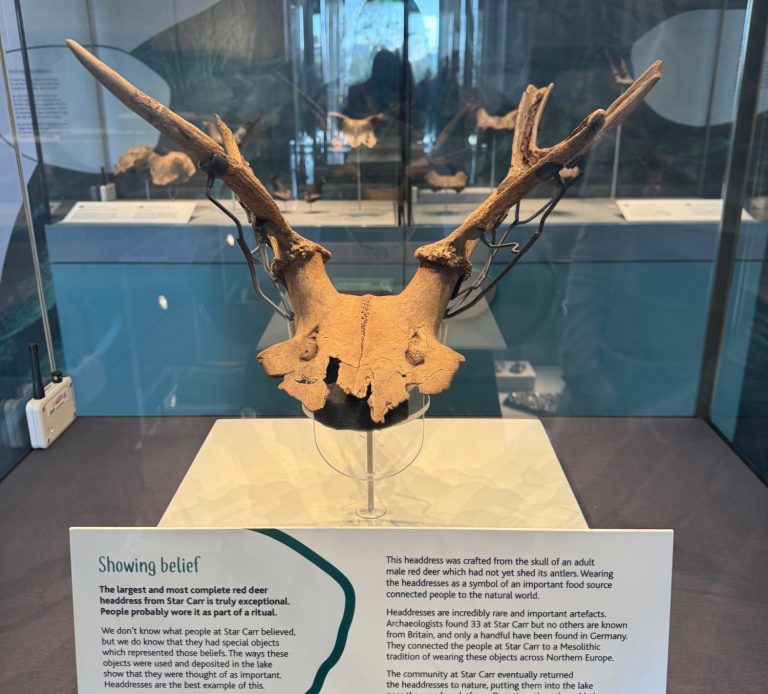
Summer's Eve and ancient Yorkshire
Summer's Eve told Anders, son of Eric, that she was named after a specific time of day when the sun sets in summer, when the skies fill with orange.
It isn't widely known, and not as famous, but Yorkshire hosts the important Tornborough henges, the remains of dozens of monuments across a landscape that was sacred to our prehistoric ancestors, and continuously occupied as evidenced by burial mounds, stone circles, rock art and my favourite, the site of Starr Carr.
The earliest evidence of humans in Yorkshire goes back 125,000 years, although continuous occupation evidence is from around 10,000 years ago. The lifetime of the witches ancestor sits in this pre historic time period.
There is archeological evidence but little written knowledge of the time before the Romans arrive in the first century. By the time the Romans write, Yorkshire and much of the North belongs to the Brigantes which exist alongside the Parisi to the east, the Corieltavi and Cornovii to the south, and to the North by Novantae, Selgovae and Votadini. The Brigantes appear to take their name from their main goddess, Brigantia.
Brigantia worship must have been widespread at the time because the Brigantii tribe in the Alps worshipped her, as did the Brigantes of Ireland.
The next time we meet historical Yorkshire, it is through a character that existed under Danelaw
From the late 8th century, for almost 100 years. The Viking Age changed the face of northern and western Europe. Although at the beginning, it was a gradual shift, the Vikings settled in the north for its arable land rather than to continue looting on raids.
One of the main characters in 'In Silence and Shadows' lived during this period and leaves a legacy that echoes through all the books.
In my imagination, the raids and plans for the settlement go back further, with plans to rid the local population of those they consider a significant threat - the magical ones.


Family Roots
The witches are led to believe their roots come from local witch and eternal legend, Yrsa and her five lines of descent.
But the truth is, she twisted the narrative to suit herself and the stories she spun. The magic doesn't come from her, or even her side of the family.
Fae in Yorkshire
I have long been fascinated by the fae stories of Yorkshire. It started with a Readers Digest book (remember them?) that had belonged to my paternal grandad. I flipped through it and it opened on the legend of a black dog with glowing red eyes. I was instantly hooked. Until this point I had the flower fairies books and knew about the Cotiingley fairies, but the much older tales really captured my imagination.
Before the Victorians, fae were mostly human sized. They looked like humans, only more beautiful, but had a fearsome reputation, at best they would play a trick on you, at worst they drank human blood and would kidnap children (read Sam George, University of Hertfordshire writing for The Conversation, published Oct 29th 2021 for an more up to date summary). Of course, there were still sprites, elementals, spirits, but the fae of older times appeared to be a distinct race.
This Dark Path potentially has a crazy plotline and brings the fae into Yorkshire with a bang.


Starr Carr
Ritual red deer headdess
No-one acutally knows what the headdress was really used for. Some have been found discarded after very little use, whilst some appear to have had a lot of use.
My thoughts are that hunters used these to get closer to the deer without startling them to kill. Successful hunts would have guaranted the headdress another wear, and maybe, eventually after a number of successful hunts, a ritual for abundance or good luck. Unsuccessful hunts may have resulted in the headdress being laid to rest early.

At various points around Yorkshire, you'll find stone circles or ancient rock carvings
These cup and circle carvings, weathered remains of stone circles and other pre-historic remains set my brain on fire as a teenager and still does now. Who came here before? What did these mean to them? What were their lives like?
From book 3 onwards, you'll start to see how these tie in with the witches ancestry and connection to the land.
From Efor to Elmet
In book 3 'Under Silver Stars' we meet Tess de-Elmet. The name Elmet refers to a speciic part of Yorkshire around Leeds between the 4th and 7th centuries. Elmet's territory was descended from that of the tribe of the Corieltavi, with the northern part coming from the Brigantes. Loidis (or Leeds) may have been its centre.
The people here occupied West and South Yorkshire predominantly and were a distinctly recognised celtic group.
The name lives on in places such as Barwick-in-Elmet, and Sherburn in Elmet.
